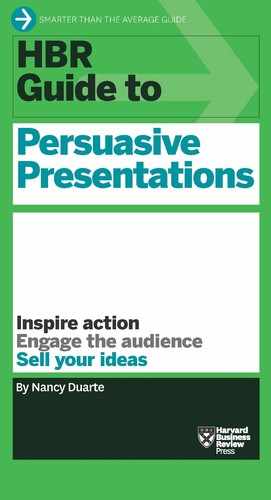Find Common Ground
Whether you evoke frenzied enthusiasm or puzzled stares or glassy-eyed boredom depends largely on how well your message resonates with the audience.
Resonance is a physics phenomenon. If you tap into an object’s natural rate of vibration, or resonant frequency, it will move: It may vibrate, shudder, or even play a sympathetic musical note—think tuning forks. The same is true, metaphorically, when you present to an audience. If you tap into the group’s resonant frequency, you can move the people listening to you.
But how do you resonate deeply enough to move them toward your objective? Figure out where you have common ground, and communicate on that frequency. Think about what’s inside them that’s also inside you. That way, you’re not pushing or pulling them; they’re moving because you tapped into something they already believe.
All this may sound highly unscientific and touchy-feely, but you can find your audience’s resonant frequency by doing a little research. You’ll want to examine:
- Shared experiences: What from your past do you have in common. Do you share memories, historical events, interests?
- Common goals: Where are you all headed in the future? What types of outcomes are mutually desired?
- Qualifications: Why are you uniquely qualified to be the audience’s guiding expert? What did you learn when you faced similar challenges of your own, and how will your audience benefit from that insight?
The amount of common ground you discover will depend on the depth of your relationship with the group.
Lots of common ground
If you are presenting to family, friends, club members, or a religous group, it’s easy to find common ground because you know the people well and tend to share many experiences, interests, and values.
Moderate common ground
With your colleagues, the challenge is a bit tougher. You know them a bit, but not as much as close friends or relatives. You share some interests but possibly only around one or two things. Examine those points of intersection for a way in.
Let’s say you’re a scientist working for a biotech company and you’ve been asked to speak at an all-hands meeting. Most of the audience members will be scientists, but you’ll also be addressing executives and administrative employees. To find common ground with them, think about why you decided to work for this company and what motivates you to do your job day to day. Maybe you wanted to use your research and problem-solving skills to help people stay healthy—a mission the others in the room will share or at least support. Finding such commonalities will help you connect with them.
Minimal common ground
With a broad audience—for instance, a group of seminar participants from a variety of organizations and industries—you’ll have many types of people to think about. The overlap won’t be immediately evident, because there are so many perspectives and backgrounds to consider. You’ll need to work hard to find or create it, but that work will pay off.
Before I went to China on a book tour, for example, I researched communication and storytelling in modern and ancient Chinese culture. I identified three great communicators in Chinese history and analyzed their speeches. When I shared my analysis with audiences, it was clear to them that I understood the historical context surrounding the speeches—I could even provide detailed answers to their questions about it. I got feedback multiple times on that trip that people could see I cared enough to really study and understand their perspective.
